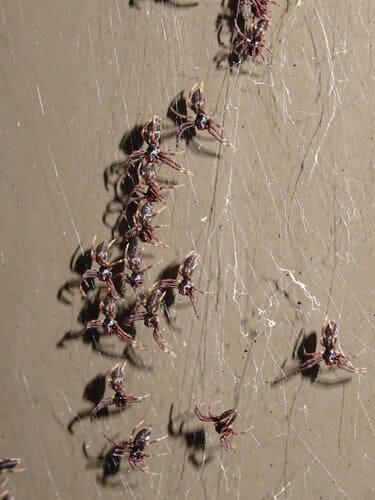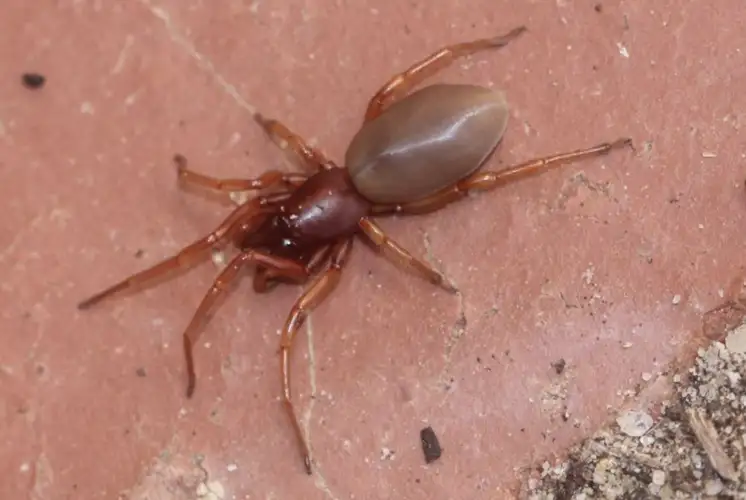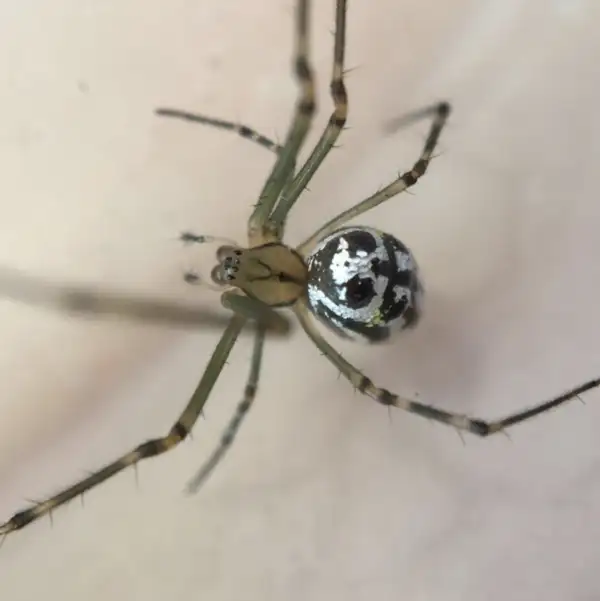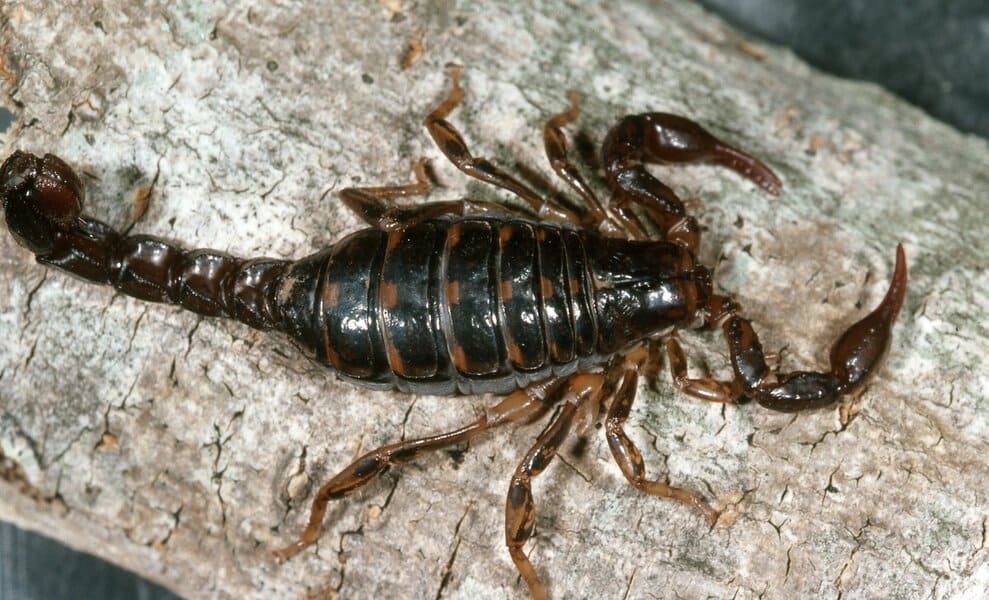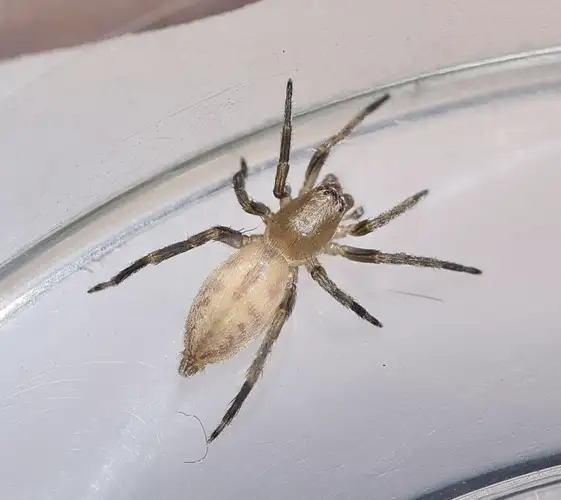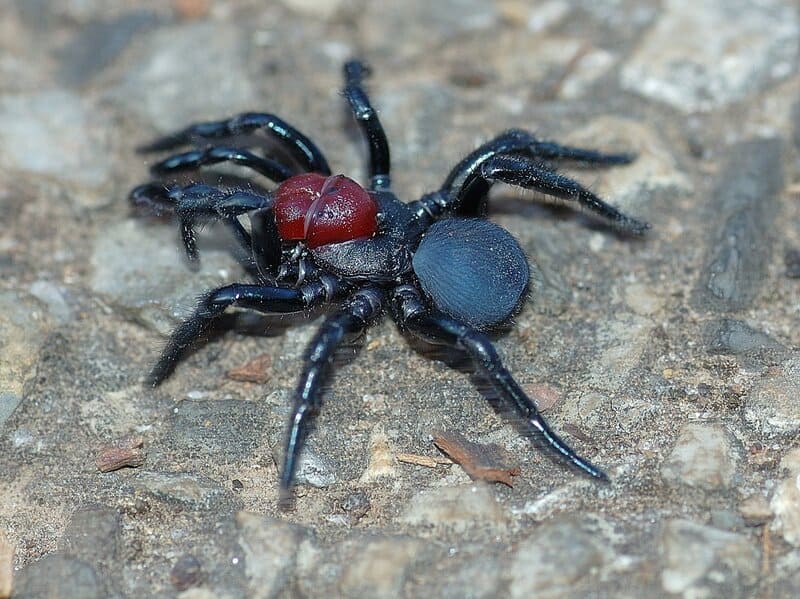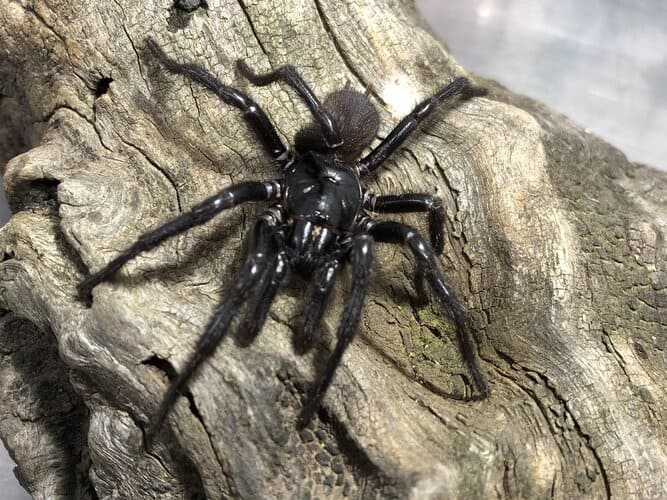Rufous Net-casting Spider
IUCN
Not evaluatedBasic Information
Scientific classification
- name:Rufous Net-casting Spider
- Scientific Name:Asianopis subrufa (formerly Deinopis subrufa)
- Outline:Arthropoda
- Family:Deinopidae Asianopis
Vital signs
- length:Females about 25 mm, males about 22 mm in body length, with leg span of several centimetres
- Weight:Light-bodied; on the order of a few hundred milligrams depending on sex and individual size
- lifetime:Probably around 1–2 years or more, though exact life span is not well studied
Feature
Classic ogre-faced net-casting spider with huge forward-facing eyes and a handheld rectangular web used to ensnare prey at night.
Distribution and Habitat
Moist forests, woodland, heath and vegetated suburban areas in eastern Australia, Tasmania and parts of New Zealand; often on branches or house walls at night.
Appearance
Slender, stick-like spider in fawn to chocolate-brown shades with mottled patterning and very large anterior median eyes on the front of the head.
Details
The Rufous Net-casting Spider (Asianopis subrufa, long known under the older name Deinopis subrufa) is a distinctive member of the net-casting spider family Deinopidae. It is one of the classic “ogre-faced spiders”, famous for its huge forward-facing eyes and its habit of hunting with a small, handheld web.
Basic Biology
Current scientific name: Asianopis subrufa
Former name: Deinopis subrufa
Common name: Rufous Net-casting Spider
Family & genus: Deinopidae, genus Asianopis
Size: Females reach about 25 mm in body length, males about 22 mm; the long, slender legs give a leg span of several centimetres.
Life span: Not well documented, but probably around 1–2 years or more.
Appearance
Rufous Net-casting Spiders have a slender, stick-like body with long legs and a narrow abdomen. Colour varies from fawn and pinkish brown to chocolate brown, often with mottled markings that help them blend in with bark and twigs.
Their most striking feature is a pair of very large anterior median eyes that face forward like headlights. These highly light-sensitive eyes give them excellent night vision and the “ogre-faced” look that makes the group so distinctive.
Distribution & Habitat
Asianopis subrufa occurs in eastern Australia and Tasmania, including Queensland, New South Wales and Victoria, and has also been recorded in New Zealand.
Typical habitats include:
Moist forests and woodland;
Heath and scrub at forest edges;
Gardens and the outside walls of houses in suitable, vegetated areas.
By day the spider usually rests pressed flat against a branch, leaf or wall with its legs drawn together, closely resembling a small stick or piece of debris.
Net-casting Hunting Strategy
At night the Rufous Net-casting Spider spins a small rectangular net of highly elastic cribellate silk. This net is held between the spider’s front and middle legs beneath the body.
Suspended from a supporting line, the spider waits above a pathway used by insects. When a beetle, cricket or other arthropod passes below, the spider lunges downward or sideways, stretching the net to several times its original size and dropping it over the prey. Once entangled, the victim is wrapped in additional silk and bitten.
Diet & Ecological Role
The species is a nocturnal sit-and-wait predator that feeds on a wide variety of arthropods, including:
By hunting along forest edges and in gardens, Rufous Net-casting Spiders help to regulate populations of many night-active insects.
Venom & Human Significance
Like other net-casting spiders, Asianopis subrufa possesses venom adapted for subduing insects. However, it is a relatively small, shy species and is not considered dangerous to humans. Documented bites are rare and are generally reported as causing only mild, localised symptoms.
For most people, the Rufous Net-casting Spider is more an object of fascination than a threat, and a good ambassador species for explaining unusual spider hunting strategies.
References
Austin, A.D. and Blest, D.A. (1979). The biology of two Australian species of dinopid spider. Journal of Zoology, London 189: 145-156.
Clyne, D. (1967). Note on the construction of the net and sperm web of the cribellate spider Dinopis subrufus (Koch) (Araneidae: Dinopidae). Australian Zoologist 14: 189-197.
Framenau, V.W., B.C. Baehr and P. Zborowski. 2014. A guide to the spiders of Australia. New Holland Publishers.
Mckeown, K.C. (1963). Australian Spiders. Angus and Robertson.
FAQ
Q1. Is the Rufous Net-casting Spider dangerous to humans?
No. It is not regarded as medically significant, and there are very few reports of bites. Any effects are usually mild and local.
Q2. How can I recognise this species?
Look for a slender, twig-like spider with long legs and a rufous to brown body, and especially for the two very large forward-facing eyes.
At night it may be seen hanging from a line, holding a small rectangular net.
Q3. Where is it found?
It occurs in eastern Australia and Tasmania and has been introduced or naturally dispersed to New Zealand, mainly in forest, woodland,
heath and vegetated suburban areas.
Q4. Why is it called “rufous”?
The specific epithet subrufa means “somewhat reddish”, reflecting the warm rufous or pinkish-brown tones that many individuals show.


